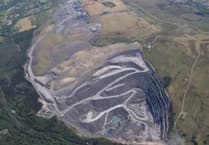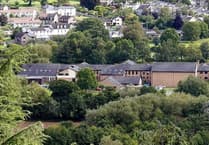William and Ffion Hague have added their voices to the Cambrian Mountains Society’s (CMS) campaign to have the Cambrian Mountains designated an Area of Outstanding Natural Beauty.
The Cambrian uplands spread across Carmarthenshire, Ceredigion and Powys, and include exceptional glaciated plateaux, lakes, mountain rivers and valleys and host a wide range of threatened plants and animals – yet have no formal protection.
In a joint statement, the Hagues said: “Living nearby, and with a long family history in the area, we fully appreciate the beauty of the Cambrian Mountains, one of the most special but least well-known places in mid-Wales. They are one of the few truly remote areas left in southern Britain, where one can escape both from the sound of traffic and from light pollution.
“It matters to us that we retain at least some spaces where it is still possible to experience a sense of harmony with nature and escape from the pressures of the urban environment. It is important, too, to maintain diverse landscapes including peatlands and moorlands for the biodiversity they sustain which, in turn, increases our own communities’ resilience to the stresses of climate change.
“We are very fortunate that the benefit of this open landscape remains available to us into this highly technological age, and we support designation of the Cambrian Mountains as an Area of Outstanding Natural Beauty as an important step to ensure that future generations, too, are able to enjoy that benefit.”
As reported in last week’s Brecon & Radnor Express, the Cambrian Mountains Society collected a 12,500 strong petition and delivered it to the Senedd recently, requesting that this issue be debated in chamber as a matter of urgency.
Lorna Brazell, CMS spokesperson, said: “Despite its extraordinary beauty, mid Wales is the only region in Wales without any protection whatsoever for its iconic landscapes. It is shocking that this heartland of the Welsh language and Welsh culture is so vulnerable to exploitation.
“With changing patterns of farming and forestry, including ancient farms being bought up to be planted with conifers for so-called carbon offsetting, and increasing threats of wind farms blighting the unspoilt vistas, the need is clear: to think holistically to ensure this important resource is properly safeguarded for the future.”

.jpg?width=209&height=140&crop=209:145,smart&quality=75)



Comments
This article has no comments yet. Be the first to leave a comment.